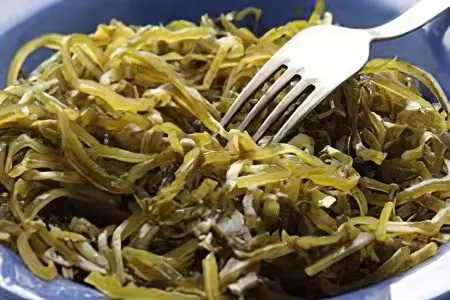Contents
In case of violation of the thyroid gland, namely, a decrease in the level of hormone production, various systemic disorders are slowly brewing in the human body. Hypothyroidism is characterized by a slowdown in many metabolic processes.
If you look at the situation from the inside, then there is a reduction in the production of digestive enzymes, a decrease in the degree of oxygen consumption by tissues, and energy consumption decreases. A person feels fatigue, weakness in the muscles, drowsiness, hypotension, slowing down of speech and thinking can develop, weight gain and swelling of tissues occur. Often there is a cessation of the production of vitamin A, and as a result – hair loss, dryness, peeling of the skin, cracks. To stop the more complex consequences of the disease and improve well-being, at the initial stage, you should clearly adjust your diet and take the drugs prescribed by your doctor.
The basic principles of the diet for hypothyroidism

With this disease, it is important to reduce from the diet indigestible foods rich in cholesterol and saturated fatty acids. It is important to note that the diet is of an auxiliary nature in the treatment of hypothyroidism, but it is unacceptable not to follow it.
It is necessary to significantly reduce the consumption of so-called fast carbohydrates and foods that increase gastric secretion.
Below are some rules for choosing products:
It is desirable to replace meat with fish and other seafood;
Give preference to fresh fruits and vegetables;
Once a week, fasting days should be arranged on fruits or vegetables;
Any sweets and “goodies” are replaced with dried fruits.
Dishes should be steamed or baked in a sealed container, salted only with iodized salt. Butter, lard and tropical vegetable oils are not recommended for use in the cooking process. You can only eat warm food, chewing it slowly and thoroughly. The body should not spend a lot of energy on digesting food, so the latter should be light and well cooked. After eating, it is advisable to rest. In addition, it is important that the diet is varied.
Eligible Products

What foods can be eaten to be sure of their benefits to the body?
The list of allowed products includes:
Seaweed, sea fish, mackerel, salmon. These products are very rich in phosphorus, polyunsaturated fatty acids and iodine;
Salads from fresh vegetables (from any vegetables, with the exception of the cruciferous family! For example, from carrots, spinach, potatoes, cucumbers, beets, and of course any fresh greens);
Kashi: buckwheat, millet and barley groats;
Lean meat and chicken meat;
Fruits (any), especially persimmon, feijoa and kiwi, which are rich in iodine;
Seafood (mussels, scallops, squid, oysters, including rolls and sushi);
Yesterday’s or dried bread, dry biscuits;
Omelettes and soft-boiled eggs, (yolk with caution);
Doctor’s sausage;
Low-fat milk and lactic acid products, cottage cheese, low-fat sour cream;
Cheese should be chosen unsalted and low-fat;
What drink? Tea and coffee can be consumed, but brew them weakly. Strongly brewed tea or coffee will be harmful! Freshly squeezed juices, rose hips are very useful;
! With caution take horseradish, mayonnaise and butter;
The consumption of protein foods should be increased, and carbohydrate and fatty foods should be significantly reduced. It is necessary to replenish iodine reserves in the body, as well as to ensure sufficient intake of vitamins. Iodine is found in seafood, cherries, walnuts, tomatoes, beets, apples, cheese, grapes and dairy products. All of the above vegetables and fruits are rich in vitamins, and you can take vitamin-mineral complexes only as directed and under the supervision of a doctor. Fiber is very important in thyroid diseases. Since the metabolism in the body is slowed down, there is often a violation of the stool with concomitant constipation. Fiber normalizes intestinal patency and acts as a natural sorbent. Therefore, it is useful to add various bran to the diet.
What to exclude from the diet?

First of all, it must be said about soy, which is rich in isoflavones. And these substances are known to suppress the production of thyroid hormones.
Any vegetables from the cruciferous family should be completely excluded, since the isothiocyanates contained in them negatively affect the functioning of the thyroid gland.
Tap water is rich in chlorine, which prevents the absorption of iodine. Therefore, water must be filtered before drinking.
And also a special role is occupied by offal (liver), which provoke the development of atherosclerosis, as well as light carbohydrates, which greatly disrupt the functioning of the intestines. Therefore, it is necessary to exclude the use of foods that increase blood glucose levels. First of all, these are simple carbohydrates – pastries, fast food, polished rice, dough, juices with sugar, etc.
A patient with hypothyroidism should not drink a lot of liquid, its volume should not exceed 1,5 liters, otherwise swelling will appear.
Prohibited products include:
All legumes;
Cruciferous (all types of cabbage, turnip, radish, radish, turnip), as they prevent the absorption of iodine;
Mushrooms (in any form);
Marinades and preserves, sauces and spices;
Margarine, lard;
Alcohol (when drinking alcohol, the body needs more thyroid hormones. Therefore, it is better to refuse alcohol completely, or use it in minimal quantities.);
Fatty sausages, sausages, any smoked meats and pickles. Canned fish;
Smoked and salted fish, canned fish;
Fatty meats, such as lamb, goose, duck;
Offal (brains, liver, kidneys);
Strongly rich broths;
Any muffin, cakes, pastries and pancakes;
It is limited to take jam and honey, pasta and rice;
Mustard, pepper, cocoa and Coca-Cola;
Fish caviar;
Diet for a week with hypothyroidism
Below is an approximate diet for a week with one fasting day. During the fasting day, you can choose to eat 1,5 kg of apples, 2 kg of cucumbers or drink 1,5 liters of 3% kefir. Other options are possible.
Day of the week | A set of foods that are eaten, dividing them into 4 – 5 meals (breakfast, second breakfast, lunch, dinner) |
Monday |
|
Tuesday |
|
Wednesday |
|
Thursday |
|
Friday |
|
Saturday |
|
Sunday |
|
This menu is approximate, most products can be replaced with similar ones, but more suitable to taste. If the menu contains fish, it is better to give preference to salmon, herring, mackerel and bondage – rich in iodine. The same group of products includes mineral water enriched with iodine.
The diet for hypothyroidism is not considered rigid, it is rich and varied in products, sometimes you can treat yourself to a cup of natural coffee for breakfast. The main thing is to follow the basic principles of this diet.









